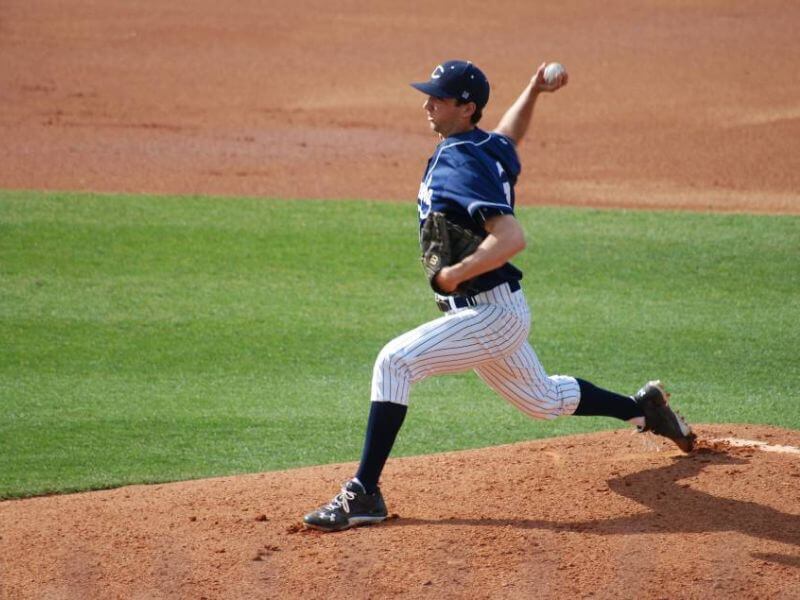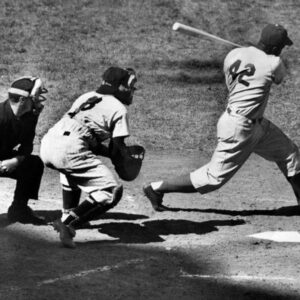What is wrc+ in baseball ? The baseball world has undergone a revolution, one that has taken place in the past few decades. It has transformed how many view the game. And while no metric can completely quantify the game as a whole, those in and around baseball now have better ways to break down what’s happening and what might happen next.
In addition to batting average, RBIs, pitcher wins and ERA, some advanced metrics — fWAR, wRC+, BABIP, FIP, OOA, wOBA and so many others — give us a more complete picture of what’s going on or why something happened. It isn’t just to replace the “eye test” or scouting, but it is to be layered on top of everything else, sort of like a blue print.
Youthful Guardians being tested:Guardians know they must ‘fight through’ tough, tiring stretch
Closing doors:As Guardians scuffle, Emmanuel Clase makes good on team’s long-term investment in him
And why is it so important for these metrics to appear in our coverage? That’s simple: because teams are using advanced metrics as a part of their decision making, whether it comes to player evaluation as a whole, free agency, trade decisions, the draft, anything and everything.
And since teams have rolled analytical ways of evaluating players into their decision-making, it is imperative that the coverage of those teams reflect that. Otherwise, readers and listeners are being left out on key aspects that determine how teams are operating in this modern age of baseball.
Some readers have sent emails asking for explanations of some of these advanced numbers in an effort to better understand them, so we thought we’d offer some explainers to give extra context. And in the future, whenever these metrics are used in stories, these explainers will be linked and readily available for a refresher.

What is weighted runs created plus?
Before diving into wRC+ (weighted Runs Created plus), we have to first understand Runs Created. That base metric — Runs Created — aims to estimate a player’s total offensive contribution to a lineup and includes factors like a hitter’s ability to get on base and hit for extra bases.
Weighted Runs Created Plus is the more detailed version of that. It takes the Runs Created statistic and adds some key factors into the equation, such as the era (trends around the league) or ballpark effects. It’s then adjusted so that a wRC+ of 100 represents a league average hitter. A wRC+ of 120 would be 20 percent above league average, and an 80 would be 20 percent below league average.
So for example, if Hitter A and Hitter B have identical stat lines, but Hitter A plays his home games in a hitter’s park (such as Coors Field) and Hitter B plays primarily in a pitcher’s park, that will be taken into account. It also factors in league trends and that era. For example, the same stat line for a hitter in 1999 (the middle of what is now known as the steroid era, where hitting was king) won’t be compared in the same way that a 2001 stat line would be (a year in which pitchers had the upper hand compared to 20 years ago).
It’s a solid way to compare position players as hitters, both in the now and in the past.
In a given year, the league leaders in wRC+ — which would represent the best overall hitters — will be about 175 or even higher. In 2019, Mike Trout led MLB with a 177 wRC+, meaning he was 77 percent better than the average hitter. Christian Yelich finished just behind him at 174.
Last year, Bryce Harper paced baseball with a 170 wRC+, edging out Vladimir Guerrero Jr. (166) and Juan Soto (163). Also looking at 2021, some of the game’s stars — Mookie Betts, Carlos Correa, Freddie Freeman — finished between a 131 and 134 wRC+.
In the context of Cleveland, last year Jose Ramirez hit .266 with 36 home runs, 103 RBIs and 111 runs scored and finished with 6.5 fWAR en route to a sixth-place finish in American League MVP voting. He ended the season with a 137 wRC+, meaning he was 37 percent better than the average hitter. Franmil Reyes, who had his season cut short due to injury but hit 30 home runs and drove in 85 runs in 115 games, finished second on the team with a 125 wRC+.
Cesar Hernandez (.256, .307 on-base percentage, 18 home runs, 60 RBIs) was nearly a perfectly average hitter — 101 wRC+ — before being dealt to the Chicago White Sox at the trade deadline.
What about this season? Ramirez has posted a 166 wRC+, which has him in the MVP conversation. Andres Gimenez, having a breakout 2022 (.300, .350 OBP, nine home runs, 38 RBIs), has a 139 wRC+, with Josh Naylor right behind him at 137. Reyes has gone the other way from his solid 2021 season, as his struggles have him with a 72 wRC+, indicating he’s been 28 percent below league average in 2022.
What are wRC and wRC+?
wRC and wRC+ Definitions
It’s easy to make the game more complicated than it needs to be, but when a batter steps to the plate, he really has one overall goal to accomplish: to create runs. Actions which help create runs include getting hits, drawing walks, and more. On the other side, actions which harm a team’s opportunity to score runs include ground outs, fly outs, and of course, strikeouts.
It’s against this backdrop that we introduce two statistics: wRC and wRC+. The abbreviation “wRC” stands for Weighted Runs Created. These stats are based on an earlier stat simply called Runs Created, which was developed by Bill James. The Runs Created version was typically used to assess how many runs a team would be expected to score, but it was also used occasionally to evaluate players. wRC and wRC+ improve on this earlier version by adding weights to specific outcomes in order to more fairly value performance. For instance, a double with worth more than a single, but by how much? The weights used by these stats make sure each type of offensive performance receives proper credit.
Let’s discuss the idea of ‘creating runs’ and why it is so important. Obviously, wins and losses are decided by runs, so scoring as many as possible is the goal. However, assigning credit for those runs is difficult, because multiple players typically combine their efforts to produce a run. Both wRC and wRC+ get around this problem by offering the appropriate weights to events that can lead to the production of runs.
So, why the need for two stats? There are a couple of important differences between the two. For one thing, wRC is considered a “counting” stat because it accumulates as a season goes along. On the other hand, wRC+ is a “rate” stat, which moves up and down throughout the season based on a player’s performance. A good way to understand this difference is to think about hits and batting average. Hits is simply the total number of hits a player has accumulated, while batting average is the rate at which he records hits. wRC and wRC+ are similar. wRC adds up the Weighted Runs Created by a player for a given time period, while wRC+ establishes a rate that factors in important elements like league and park factors.
The Concept of wRC and wRC+
As modern statistics have analyzed the game more carefully, it has become clear that more advanced statistical metrics can give fans and teams a better perspective on the abilities of each individual hitter.
At the heart of wRC and wRC+ is a statistic known as weighted on-base average, or wOBA. The basic idea behind wOBA is that each hit should be given its fair value. In a batting average, all hits are valued equally, which is obviously not the case in the real world. For instance, a home run is far more valuable than a single, but batting average sees them as equals. Something like slugging percentage attempts to get around this issue, but it still doesn’t capture the full picture accurately. With wOBA, we’re able to assign fair values to various types of hits, giving an improved picture of batter performance.
As you will see when we get to the calculation for wRC, it relies heavily on wOBA for these benefits.

Why are wRC and wRC+ Important?
These two statistics are important because they are an excellent way to sum up a player’s offensive contribution in a single number. With so many stats available in baseball today, it can be hard to know where to focus your attention when evaluating hitters, and these two stats offer a nice solution to that problem. By assigning appropriate credit for the runs a hitter creates, wRC and wRC+ have become important metrics in hitter evaluation.
Specifically, it is really wRC+ that takes so much of what matters and rolls it up into a single number. Since it is scaled to have league average performance always equal 100, it takes just a glance to see whether a player is an above- or below-average hitter. A wRC+ over 100 is an above average performance, while anything under 100 is below league average. Some baseball fans who are put off by the complexity of many modern statistics would find that they can easily understand what wRC+ represents, once they are introduced. This is one of the stats that does have the potential to reach a much wider audience.
Above is information what is wrc+ in baseball. Hopefully, through the above content, you have a more detailed understanding of what is wrc+ in baseball. Thank you for reading our post.









